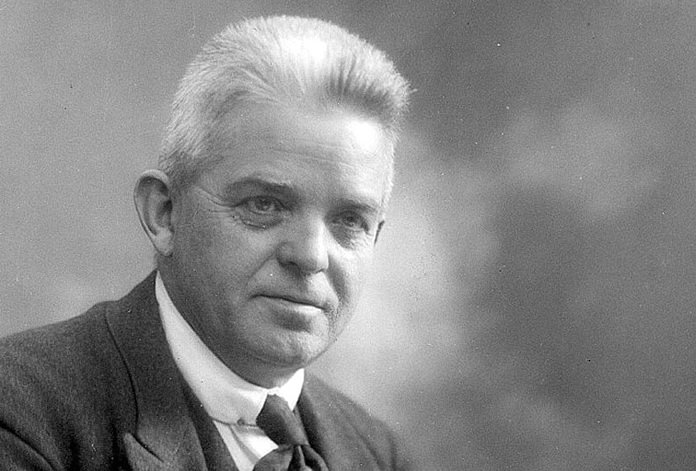If you spent your childhood years in Great Britain it’s more than likely that you came across a series of children’s books by Enid Blyton that related the summer holiday adventures of four children and a dog. I refer of course to the so-called Famous Five although this name wasn’t used until 1951, after nine books in the series had already been published. Enid Blyton evidently intended to write only six or eight books, but their huge commercial success encouraged her to write twenty-one full-length Famous Five novels, as well as a number of other series on similar themes. She could apparently complete out a book within a week and sometimes it showed, for the plots and scenarios were often repetitive.

The Famous Five never grew up with the series; they were locked in childhood forever. The books are still selling today at a staggering rate of two million copies a year and they’ve been translated into ninety languages. Yes, including Thai since you asked. Out of curiosity, I bought a Thai version and wondered what the average kid in Buriram would make of these privileged, well-educated middle-class and slightly insufferable kids obsessed with chasing petty criminals.
Please Support Pattaya Mail
Anyway, let’s turn to another famous five, Denmark’s best-known woodwind quintet. Known as Carion they “inject new life into the woodwind quintet genre… promising an extraordinary concert experience.” They usually play from memory which is remarkable for any ensemble. This freedom from the clutter of music and music stands enables them to communicate more effectively with one another as well as with the audience. Like actors in a play, they use movement, gesture and facial expressions to dramatize the music and this makes for an unusual and fascinating performance experience.
Carl Nielsen (1865-1931): Quintet Op. 43. Carion Wind Quintet. (Duration: 26:45; Video: 1080p HD)
In this performance the audio and the video were recorded separately. It’s fascinating to see how the performers interpret the music but if you find the theatricals a bit distracting at first, do persevere because it becomes clear how the musicians have carefully choreographed their movements. It really does seem to add an extra dimension to the performance. Notice how the oboe and bassoon often seem to have conversations together and at other moments the bassoon and horn engage in a chat. There’s a splendid dramatic confrontation between the bassoon and the clarinet at 19:26.
This work is scored for the usual combination of flute, oboe, clarinet, horn and bassoon and was composed early in 1922. It’s considered one of the finest works of its type and has a permanent place in the wind quintet repertoire. Nielsen wrote that he “attempted to render the characters of the various instruments. At one moment they are all talking at once, at another they are alone.”
This is a melodious and charming work which I suppose would be described as neo-classical. If Nielsen’s music is new to you, this would be as good an introduction as any.
Franz Schubert (1797-1828): Piano Quintet in A major, D. 667 (“The Trout”). Daniel Barenboim (pno), Itzhak Perlman (vln), Pinchas Zukerman (vla) Jacqueline du Pre (vlc) Zubin Mehta (db) (Duration: 55:33; Video: 360p)
Just look at who’s playing! You can’t get much more famous than these people. You might be surprised to see the conductor Zubin Mehta as the double bassist. This is a wonderful documentary film by Christopher Nupen made in 1969 when all the performers were in their early twenties. It records the preparation for a concert at London’s Queen Elizabeth Hall as well as the concert itself.
The first quarter of an hour shows the artists arriving in London and their first rehearsal. It is wonderful to see these legendary names so early in their careers and fascinating to see them in rehearsal together. There are plenty of laughs too, especially as they lark around in the artists’ room of the Queen Elizabeth Hall before the performance. Needless to say, the playing is superb and the sound quality reveals the viola and cello parts clearly. It’s interesting to see how much visual communication is going on during the performance.
It might seem odd to name a quintet after a fish, but as with most things, there’s an explanation. Schubert wrote this work in 1819 when he was twenty-two years old and incidentally, around the same age as the musicians in the film. The fourth movement is a set of variations on his song Die Forelle (“The Trout”) which he wrote a couple of years earlier. Schubert was best-known in Vienna as a song-writer and the song Die Forelle was something of a hit. His song-writing skills are very much in evidence in this thoroughly joyful and tuneful work. Even if you know it well, you’re bound to find something new and exciting in this wonderful performance.
 |
 |
 |





